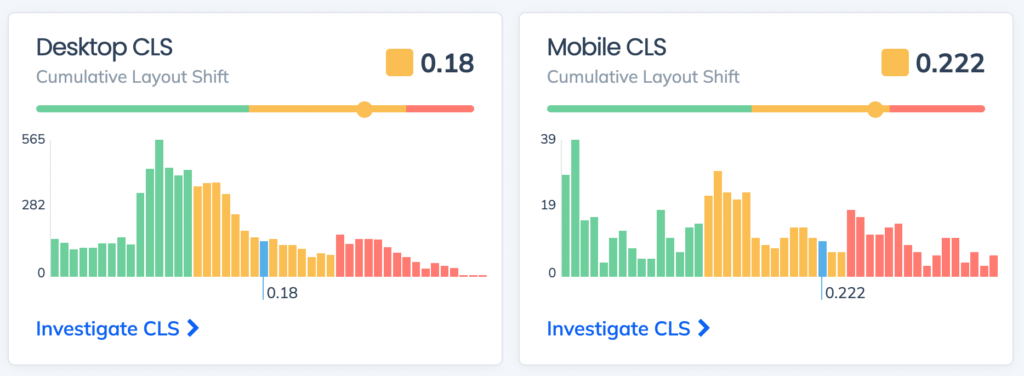The Top 10 Business Advantages of Book Publishing Services and How to Achieve Them
Businesses are always looking for new and creative ways to differentiate themselves from the competition and become leaders in their respective fields in the ever-changing world of business. Using Book Publishing Services is one tactic...
The post The Top 10 Business Advantages of Book Publishing Services and How to Achieve Them appeared first on 85ideas.com.
Rethinking Data Governance: Metrics for Meaningful Outcomes
For years, data governance has been obsessed with a metric that feels more like accounting than strategic decision-making: coverage. Data Governance tool vendors educated a generation of governance professionals to diligently track the percentage of documented data, chasing a completion checkbox that often misses the bigger picture.
The problem? Coverage misses the mark. It assumes that meticulously documented data automatically translates to understandable, usable information. But what if the end user just needs an answer to a question? Why make them navigate a labyrinth of tables, columns and descriptions when the goal is simply to get the right information, quickly and efficiently?
Why Can’t I Find the Right Data?
The modern data stack has helped democratize the creation, processing, and analysis of data across organizations. However, it has also led to a new set of challenges thanks to the decentralization of the data stack. In this post, we’ll discuss one of the cornerstones of the modern data stack—data catalogs—and why they fall short of overcoming the fragmentation to deliver a fully self-served data discovery experience.
If you are the leader of the data team at a company with 200+ employees, there is a high probability that you have.
Successful Products Using Raspberry Pi Computing Model
The Raspberry Pi, a flexible and low-cost single-board computer, has fostered innovation across several sectors. It was originally intended for educational and hobbyist projects but has now made its way into a slew of successful commercial goods. In this post, we will look at some of the astonishing devices that have taken use of Raspberry Pi’s capability, proving its versatility and robustness.
Raspberry Pi: A Brief Overview
Before we delve into the successful products, let’s provide a brief overview of the Raspberry Pi and its key features.
Chris’ Corner: More Like Celebrating Style Skills
It’s January and we’re seeing a little round of CSS wishlists make the rounds.
- Tyler Sticka is mostly hoping for better support on stuff that already is starting to cook, like View Transitions, anchor positioning, balanced text, and scroll-driven animations. But he’s got his own new wishes and has done the leg-work to properly propose them, like more useful vertical alignment (without extra work).
- Christopher Kirk-Nielsen also has some wishes for better support for thing that ought to be doing that naturally, like Style Queries, but also has some really interesting ideas of his own like using
transformto force an element of an unknown size into a specific size, which he also wrote up properly. - Manuel Matuzović has more love for Style (and State) Queries (agreed there is some real potential here to reduce CSS size and complexity) and @scope. On the doesn’t-exist-yet side, a vote for mixins to which I’ll echo: Yes, please!
- Elly Loel weighted in last year using the same distinctions: stuff that is already cooking (e.g. Custom Media) and stuff that doesn’t exist yet (e.g. detecting flex-wrap). Good news for Elly, some stuff from the list got done, like subgrid.
- Nathan Knowler joins the choir with strong votes for Style Queries, Scroll-Driven Animations, and @scope, among others.
- Sarah Gebauer has a great one on her wishlist about borders and controlling the offset. Hey, SVG can do it and it’s super cool. Plus a shout out to a personal favorite: more useful attributes and the
attr()function.
Phew! That’s a lot of people taking the time to be pumped about CSS and make clear what they want. The way CSS is going lately I would not be surprised to see massive progress again in 2024.
Stephanie Eckles points out 12 one-liners in CSS that are all tremendously useful and powerful.
One liners.
Stuff like p { text-wrap: pretty; } that just makes web type all the nicer. Five years ago our gapping mouths would have been on the floor if they knew what was coming.
Brecht De Ruyte took two brand new CSS and HTML things and smashed them together:
- The new
<selectmenu>element, which is exactly like<select>except fully CSS styleable. - The Anchor Position API
It’s a cool interaction that is supposed to end up like this:

But this was actually published mid-last-year, and the demo is already broken even. It only ever worked in Chrome Canary with the Experimental Web Platform Features flag turned on, so that just goes to show you how fast this experimental stuff moves.
It’s not <selectmenu> any more, it’s <selectlist>, but even after forking the demo and trying to fix it, I couldn’t get it. I suspect it’s changes to the Anchor Positioning API that I’m not up to snuff on. I do suspect this interaction is possible today, but you’d either be using cutting edge APIs that may or may not be polyfillable, and/or recreating a ton of interaction and accessibility stuff that you’d get for free with Brecht’s implementation.
Ben Frain has a very clever idea for drawing angled lines in CSS (like a line chart). Which, weirdly, isn’t a particularly easy thing to do in CSS. You can make lines various ways and rotate them and stuff, but it’s harder to be like: draw a line from here to here. SVG is typically the path for that.
In Ben’s technique, you take advantage of the polygon() function and clip-path. You “draw” points in the clip path at certain coordinates, then go back over the exact same coordinates with a 1px difference, leaving that little gap where a new color can “shine through”.
Like:
clip-path: polygon(
0% 60%,
20% 90%,
40% 43.33%,
60% 61.67%,
80% 23.33%,
100% 18.33%,
100% calc(18.33% - 1px),
80% calc(23.33% - 1px),
60% calc(61.67% - 1px),
40% calc(43.33% - 1px),
20% calc(90% - 1px),
0% calc(60% - 1px)
);
Robin Rendle once made a bunch of different chart types in CSS only, but I don’t think I’ve seen a CSS “sparkline” like this until now.
Mastering Data Integration: Enhancing Business Efficiency
With more data comes greater responsibility for managing it optimally. After all, it's the heartbeat of any surviving business. A data integration strategy involves collecting, managing, and consuming it for analytical success. That being said, it's not only about piecing the data sets together. Rather, it’s the official roadmap of disparate sources communicating with each other to produce valuable insights.
The right data integration strategy is essential for locking consistency, accuracy, and reliability, enabling futuristic decision-making. Without the same, enterprises fall prey to inaccurate data that can have critical implications for the business.
Consistent Change Data Capture Across Multiple Tables
Change data capture (CDC) is a widely adopted pattern to move data across systems. While the basic principle works well on small single-table use cases, things get complicated when we need to take into account consistency when information spans multiple tables. In cases like this, creating multiple 1-1 CDC flows is not enough to guarantee a consistent view of the data in the database because each table is tracked separately. Aligning data with transaction boundaries becomes a hard and error-prone problem to solve once the data leaves the database.
This tutorial shows how to use PostgreSQL logical decoding, the outbox pattern, and Debezium to propagate a consistent view of a dataset spanning over multiple tables.
Building a Real-Time Ad Server With Dragonfly
Ad-serving systems frequently need to accommodate millions, or even billions, of requests daily, constructing and delivering personalized ads within just a few milliseconds. Beyond handling the substantial daily volume of requests, these platforms must be capable of managing spiky traffic with sudden surges in user activity as well.
In this blog post, we will construct a real-time ad cache server utilizing the cutting-edge technologies of Bun, ElysiaJS, and Dragonfly. Not just for the enjoyment of exploring new tools, but also to leverage their exceptional developer experience and performance capabilities. Let's take a brief look at the technologies we will be using in this post:
Make Your Backstage Templates Resilient
I suppose that you are a user of Backstage and have your own templates that automate some repetitive and/or complicated flows of your organization. Some of your templates take a long time to be executed. For example, you provision your infrastructure, and your template guards the process along the way. Now, you are happy that you provided your engineers with these templates to lessen their burden, but you have to be careful with redeploying Backstage because you might fail ongoing tasks and make your engineers angry.
Here, I’ll explain what actions you can follow from release v1.23.0-next.0 to make your templates resilient to redeployment or any accidental server failures.
Learning To Test in the Metaverse
The Metaverse promises a new kind of internet capable of integrating real-world events and online sources into a seamless user experience. While it's often billed as 'just' a VR concept to users, it's something far more complex and interesting to technology companies and developers with an eye on the future.
The concepts offered as part of the Metaverse's future offerings could solve some of the web's biggest challenges. Improved interactions, identity verifications, and transactions that span both virtual and physical worlds will change how we think about the web from the ground up. However, each of these tasks raises enormous practical challenges for the designers, developers, and engineers tasked with building it.
Email sender requirements: What you need to know for February 1, 2024
A Revolutionary Cold Storage Solution for the Data Era
We are generating more data every day than ever before. By 2025, it's estimated that 463 exabytes of data will be created each day globally – that's the equivalent of 212,765,957 DVDs. Much of this data is "cold data"; rarely accessed after being stored, yet still needing to be retained for the long term. Managing cold data is becoming a rising challenge as the world's data generation grows exponentially.
Traditional storage media like magnetic tape and hard disk drives struggle to provide the longevity, capacity, accessibility, and affordability needed for sustainable cold data storage. But one startup has developed an innovative solution that could be the answer.
Fixing Cumulative Layout Shift Problems on DavidWalshBlog
Over 50 thousand developers visit DavidWalshBlog every month from around the world to learn JavaScript tricks and fix problems in their code. Unfortunately, some of them have a slow experience on the site.
David tracks the performance of his Core Web Vitals and overall performance with Request Metrics. Recently, we noticed that his CLS performance score was trending pretty slow for both desktop and mobile users.

Wait, what is CLS?
Cumulative Layout Shift (CLS) is one of the Core Web Vital performance metrics. It doesn’t measure load time directly, instead it measures how much a page shifts while it is being loaded. You’ve definitely seen this and been annoyed by it. These shifts make a site feel slow to a user.
CLS and the rest of the Core Web Vitals are super important. Not only because they measure user experience, but also because they influence the pagerank of a site in search. And search traffic is life for bloggers, media sites, e-commerce stores, and pretty much everyone with a website.
If we can fix the site’s CLS problem, we’ll give readers a faster experience, and boost the search ranking so David can help even more people. Sounds like a great incentive, let’s figure it out.
Crashing with Google Lighthouse
To find a performance problem, many developers will use a tool like Google Lighthouse. I ran a Lighthouse report on David’s site, and here’s what I got.

A perfect score! Let’s pack it up and go home.
The trouble is that Google Lighthouse is a lie. Real users won’t have this performance. That score only represents a single test, from my lightning-fast computer, in the USA, on a fast broadband connection.
David’s real users come from all over the world, on varying devices and networks, and at all times of the day. Their performance experience is far from perfect. That’s why we need to get real user monitoring for the performance, otherwise we might never know that there is a problem.
Where are the CLS problems?
David has been writing for a long time and has hundreds of posts on his site. Request Metrics tracks the CLS score per page so we can zero-in on the problems.

The largest traffic page is the root page, and that has a good CLS. But many of his posts, like Play Grand Poo World and Pornhub Interview have troubling CLS scores. We can also track the elements responsible for CLS, and for most of the posts its main > article > p. That means the first paragraph of the article is the thing shifting. Why would it do that?
What is common about these posts with the worst CLS scores? Images. Images are a very common cause of CLS problems because a browser doesn’t always know how big an image is until it’s downloaded. The browser assumes it’s 0x0 until it has the image, then shifts everything around it to make room.
Posts with lots of images would shift many times as each image was downloaded and the article shifted to make room for the new content.
Using images correctly for CLS
To avoid layout shifts when using images, we need to give the browser hints about how big the images will be. The browser will use these hints to reserve space in the layout for the image when it’s finished downloading.
<img src="/path/to/image" width="300" height="100" />
Notice that the width and height are specified as their own attributes — not part of a style tag. These attributes set both a base size of the image as well as the aspect ratio to use. You can still use CSS to make the image bigger or smaller from here.
Also notice that there is no px unit specified.
Image Sizes in WordPress
DavidWalsh.name is hosted on WordPress, where there are some built-in tools to do this. We can utilize wp_image_src_get_dimensions to get the dimensions of images he’s using and add them to the markup.
Proving it works
David made the image changes a few days ago, and we’re already seeing an improvement. CLS has dropped 20% to 0.123. We’re real close to the “Good” range of CLS now.

There’s still some issues to sort out around fonts, but that will be a story for another time and another post.
If you’re looking to improve the real performance of your site, or worried about losing your SEO juice from Core Web Vital problems, have a look at Request Metrics. It’s got the tools to track your performance and actionable tips to actually fix the problems.
Plus it’s free, so it’s got that going for it.
The post Fixing Cumulative Layout Shift Problems on DavidWalshBlog appeared first on David Walsh Blog.
How to Customize WordPress Header: Background Color, Font Size, and Image
Provision Cloud Infrastructure Using Google Duet AI
Duet AI by Google is an amazing tool for app developers. It uses advanced AI to make coding easier. You can talk to it like you talk to a friend, and it helps you write code, fix problems, and learn coding tricks. It's great for both experienced developers and beginners. Duet AI makes coding feel like a chat, making complex tasks simple and enjoyable.
This article guides you through leveraging Duet AI for the following tasks:
Unraveling the Wonders of Bluetooth: Connecting the World Wirelessly
Few technologies have had as deep an influence as Bluetooth in a world where continuous connection has become a fundamental part of our everyday lives. Bluetooth has quietly revolutionized the way we connect and interact wirelessly, from our headphones to our automobiles, from medical equipment to smart home products.
Evolution of Bluetooth: Pioneering Wireless Connectivity
The inception of Bluetooth traces back to the late 1990s, emerging from the collaborative efforts of engineers at Ericsson, a telecommunications company based in Sweden. The name “Bluetooth” itself is a nod to Harald Bluetooth, a Danish king known for uniting disparate regions—an apt metaphor for a technology designed to unite disparate devices.
The High Risk of Low-Cost Data Integration Tools
While data is precious, it becomes useful only when it is cleaned, standardized, connected, and ready for analysis. That is why the process of data integration, which helps connect data to turn it into useful insights, is crucial for a competitive advantage.
To meet a wide spectrum of data use cases, you need the right data integration tools capable of interacting with multiple diverse data sources and targets without compromising on speed, security, or stability at any scale.





